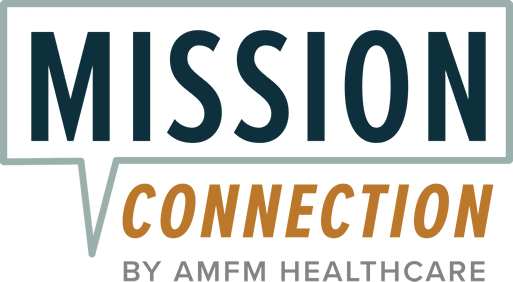Ritalin for ADHD: Uses, Dosage, Side Effects, and More

December 11, 2025
Authored by: Eilaf Meenai, MD
Edited by: Emma Loker, BSc, PgDip
Attention deficit hyperactivity disorder (ADHD) affects up to 11.3% of children in America. If it’s not diagnosed and treated early, it can continue well into adulthood, with statistics showing it impacts around 4.4% of adults.1
Ritalin is a stimulant drug that’s one of the most commonly prescribed medications for ADHD. While the idea of giving a “stimulant” to someone who’s already hyperactive might sound strange, science actually supports it.
If you’ve ever wondered how exactly Ritalin works, who it’s right for, what the dosage looks like, how long it lasts, or what the risks are, you’re at the right place. Mission Connection can talk to you about your concerns and whether Ritalin is the right choice for your or a loved one’s needs.
This guide can also shed light on how Ritalin works, discussing:
What Ritalin is and how it works- The conditions Ritalin is used for
- The Ritalin dosage guide
- How long Ritalin takes to work
- How long the effects of Ritalin last
- Potential Ritalin side effects
- Who Ritalin isn’t suitable for
- A comparison of Ritalin to other ADHD medications
- Where to find professional ADHD treatment and support

What Is Ritalin and How Does It Work?
Ritalin is the brand name for methylphenidate, a drug that falls under the category of central nervous system stimulants. However, Ritalin doesn’t hype you up like caffeine or cause a rush like recreational drugs. Instead, it has a targeted action.
In the brain, nerve cells communicate by releasing chemicals like dopamine and norepinephrine into small gaps called “synapses.” After these chemicals do their job, they’re reabsorbed back into the cells.
People with ADHD either don’t have enough of these brain chemicals in the right places, or the chemicals disappear too quickly. So their brain signals don’t last long enough to keep them focused.
Ritalin blocks dopamine and norepinephrine transporters so these chemicals can hang around a little longer in the brain.2 This gives the brain more time to use these chemicals properly. And when these chemicals are balanced, people can concentrate better, think more clearly, and control their impulses more easily.
Ritalin mostly works in a part of the brain called the prefrontal cortex, which is responsible for:
Planning- Decision-making
- Paying attention
- Controlling behavior
What Is Ritalin Used For?
The most common and well-researched use of Ritalin is in ADHD. It is FDA-approved for both children and adults with ADHD, and is part of a broader treatment plan that includes behavior therapy and lifestyle support.3
To break down the benefits of Ritalin in ADHD treatment, Ritalin use in ADHD leads to:
Better concentration- Fewer careless mistakes
- Less fidgeting or restlessness
- Improved ability to follow through on tasks
- More control over emotional outbursts
Ritalin is also used for narcolepsy, a sleep disorder where the brain can’t regulate wakefulness. People with narcolepsy struggle to stay awake during the day, even if they’ve had enough sleep. Although Ritalin does not fix the root cause of narcolepsy, the drug stimulates the central nervous system enough to promote alertness and reduce daytime sleep attacks.
However, the FDA has approved Ritalin only for adults with narcolepsy and only after first-line narcolepsy medications have failed.
As an important note, Ritalin is not a quick fix for low energy, brain fog, or bad moods. It should also not be used as a study drug or performance booster.
Ritalin Dosage Guide
Ritalin comes as yellow round tablets with the following dosage strengths:
5 mg- 10 mg
- 20 mg
Ritalin is not recommended for kids under six years because the drug’s safety has not been established in this age group.
For older children, treatment begins with 5 mg taken via the mouth twice a day; once before breakfast and again before lunch. If this dosage doesn’t do the job, your healthcare provider may increase it in small weekly steps. For instance, they may raise it by 5-10 mg at a time, until the response is just right. However, going above 60 mg per day isn’t recommended for children.
In adults, the starting dosage is a total daily dose of 20-30 mg, split into two or three doses throughout the day. For example, you could take 10 mg in the morning, another 10 mg around lunch, and a third dose if needed in the early afternoon.
Each Ritalin dose should be taken 30-45 minutes before meals for better absorption. And since Ritalin is a stimulant, it should never be taken later than 6 PM, as it can interfere with sleep. Adults should also never exceed 60 mg per day unless directed by a specialist.3
Effectiveness of Ritalin for Children With ADHD
Ritalin has been around for over 60 years.4 So it’s not some new, experimental treatment. In fact, it’s been the go-to medication for ADHD in children and teens for longer than most of us have been alive.
To prove its effectiveness in children with ADHD, a large study looked at 212 clinical experiments with over 16,000 kids and found that:5
Teachers consistently noticed behavioral improvements in children who were taking Ritalin- The general behavior of the kids on Ritalin improved outside the classrooms, too
- The probability of serious side effects was not very different among children taking the drug and those not taking it
Despite what you may have heard about Ritalin on the internet, there’s no concrete evidence that it stunts growth. A long-term study followed kids taking Ritalin for over two years and found no impact on their height or weight.6
To put it as simply as possible, Ritalin doesn’t “fix” ADHD and, of course, it doesn’t replace structure, parenting strategies, school supports, or therapy. But it is a well-researched, long-studied pharmacological therapy that can help children and teens find a much-needed sense of balance.
How Long Does Ritalin Take to Work?
Once you take a Ritalin tablet, it starts absorbing from your stomach pretty quickly, into your bloodstream, and quickly makes its way to your brain, where it balances out chemicals. It reaches its peak effect around two hours later, and this is usually when the maximum boost in attention and focus is reported.7 However, most people begin to feel the medication working within 30-60 minutes after taking it.
Ritalin should be taken before meals (breakfast or lunch), so it’s active when you need it the most during school or work hours.
How Long Does Ritalin Last?
Ritalin is short-acting, which means its effects don’t stick around all day. On average, the effects of a single dose last between one to four hours, depending on the dose and how your body processes the medication.
For most people, noticeable effects of Ritalin taper off by the three to four-hour mark. The half-life of the drug, which is the time it takes for half the drug to leave your system, is about two to three hours. 7
So even though you may still have some of the drug in your bloodstream after four hours, its noticeable effects start to wear off after half of the drug has been eliminated.
Possible Ritalin Side Effects
Like all medications, Ritalin comes with a list of potential side effects.
The most common side effects are nervousness and trouble sleeping (insomnia). These usually show up when the dose is too high or when the drug is taken too late in the day. It’s not unusual for people to skip the late afternoon dose just to avoid a restless night.
Children on Ritalin also commonly experience a reduced appetite. The drug causes a noticeable drop in hunger, which may cause weight loss if it continues for too long. Some children also complain of abdominal pain or nausea early in treatment. Other relatively common side effects of Ritalin include headaches, dizziness, increased heart rate, or palpitations.
Now, the more serious reactions of Ritalin include:
Skin reactions such as rash or peeling (exfoliative dermatitis)- Fever, joint pain (arthralgia), and rare immune responses like vasculitis (inflammation of blood vessels)
- Cardiac issues like chest pain (angina), abnormal rhythms (arrhythmia), and, in rare cases, stroke-like symptoms
Some users have also experienced mood changes like aggression, irritability, or depression. There have also been rare cases of hair loss, liver problems, and blood-related issues like anemia or low white blood cell counts.3
Who Should Not Take Ritalin?
Ritalin, like any other drug, is not for everyone. If you fall into any of the categories below, Ritalin may be a no-go for you:
You have severe anxiety, tension, or agitation- You’re allergic or hypersensitive to methylphenidate or any of its ingredients
- You have glaucoma, an eye condition where the pressure inside the eyeball increases
- You have motor tics or a diagnosis of Tourette’s syndrome, or a family history of it
- You’re taking a monoamine oxidase inhibitor (MAOI), or have taken one in the last 14 days.3
Ritalin vs. Adderall: Which Is Better for ADHD?
Both Ritalin and Adderall are stimulants used to treat ADHD and narcolepsy. They help to manage symptoms of impulse control and hyperactivity by increasing dopamine and norepinephrine. But they go about it slightly differently. The effects of Ritalin usually kick in within an hour and tend to wear off after about three to four hours. Adderall is slightly longer acting, with effects lasting for up to six hours.
The dosing ranges also differ a bit. Ritalin comes in 5 mg, 10 mg, and 20 mg tablets, and children start at 5 mg twice a day. The maximum dose for children and adults is 60 mg per day, though many don’t need nearly that much.
Adderall’s dosage forms are more granular. It comes as 5 mg, 7.5 mg, 10 mg, 12.5 mg, 15 mg, 20 mg, and 30 mg tablets.8
As for side effects, both drugs can cause decreased appetite, trouble sleeping, irritability, and stomachaches. There’s no way to predict how you will react to any medication. Some kids (and adults) feel moody on Adderall but do fine on Ritalin. Others find that Ritalin makes them feel a bit tense. There’s a lot of personal variability in response to stimulant drugs, so starting low and going slow is the golden rule for ADHD medication.
Experience a Comprehensive Approach to ADHD Treatment at Mission Connection
As we mentioned previously, ADHD treatment works best when it’s comprehensive. Medications like Ritalin are one aspect of the treatment – they work best when combined with supportive, non-medication strategies that include therapy, behavior coaching, and family involvement.
At Mission Connection, we offer personalized ADHD care that goes beyond prescriptions. Our plans include cognitive behavioral therapy for better emotional control, behavioral therapy for habit-building, and parent/family training so your loved ones can offer stronger support.
If you need someone to talk to or want more information, get in touch with us online – our team is always available to help.

References
- Reuben, C., & Elgaddal, N. (2024, March 15). Attention-Deficit/Hyperactivity Disorder in Children Ages 5–17 Years: United States, 2020–2022. Www.cdc.gov. https://www.cdc.gov/nchs/products/databriefs/db499.htm
- Jaeschke, R. R., Sujkowska, E., & Sowa-Kućma, M. (2021). Methylphenidate for attention-deficit/hyperactivity disorder in adults: a narrative review. Psychopharmacology, 238(10), 2667–2691. https://doi.org/10.1007/s00213-021-05946-0
- HIGHLIGHTS OF PRESCRIBING INFORMATION. (n.d.). https://www.accessdata.fda.gov/drugsatfda_docs/label/2023/010187s092s096lbl.pdf
- Pereira Ribeiro, J., Arthur, E. J., Gluud, C., Simonsen, E., & Storebø, O. J. (2021). Does Methylphenidate Work in Children and Adolescents with Attention Deficit Hyperactivity Disorder?. Pediatric reports, 13(3), 434–443. https://doi.org/10.3390/pediatric13030050
- Storebø, O. J., Storm, M. R. O., Pereira Ribeiro, J., Skoog, M., Groth, C., Callesen, H. E., Schaug, J. P., Darling Rasmussen, P., Huus, C. L., Zwi, M., Kirubakaran, R., Simonsen, E., & Gluud, C. (2023). Methylphenidate for children and adolescents with attention deficit hyperactivity disorder (ADHD). The Cochrane database of systematic reviews, 3(3), CD009885. https://doi.org/10.1002/14651858.CD009885.pub3
- Man, K. K. C., Häge, A., Banaschewski, T., Inglis, S. K., Buitelaar, J., Carucci, S., Danckaerts, M., Dittmann, R. W., Falissard, B., Garas, P., Hollis, C., Konrad, K., Kovshoff, H., Liddle, E., McCarthy, S., Neubert, A., Nagy, P., Rosenthal, E., Sonuga-Barke, E. J. S., Zuddas, A., … ADDUCE Consortium (2023). Long-term safety of methylphenidate in children and adolescents with ADHD: 2-year outcomes of the Attention Deficit Hyperactivity Disorder Drugs Use Chronic Effects (ADDUCE) study. The lancet. Psychiatry, 10(5), 323–333. https://doi.org/10.1016/S2215-0366(23)00042-1
- Kimko, H. C., Cross, J. T., & Abernethy, D. R. (1999). Pharmacokinetics and Clinical Effectiveness of Methylphenidate. Clinical Pharmacokinetics, 37(6), 457–470. https://doi.org/10.2165/00003088-199937060-00002
- Adderall ® CII (Dextroamphetamine Saccharate, Amphetamine Aspartate, Dextroamphetamine Sulfate and Amphetamine Sulfate Tablets). (2017). https://www.accessdata.fda.gov/drugsatfda_docs/label/2017/011522s043lbl.pdf






